Link
Under Pressure, the classic tune from David Bowie and Queen, seems like one of those songs you don’t want to mess with — we’re looking at you here, Vanilla Ice. But if someone is going to cover it, it might as well be Karen O from the Yeah Yeah Yeahs and Willie Nelson.
(via open culture)
Tags: David Bowie Karen O music Queen remix video Willie Nelson
2 notes
·
View notes
Link
2020 marks the 100th anniversary of the Theremin. It was way back in 1920 that Lev Sergeyevich Termen, better known as Leon Theremin in the west, first demonstrated one of the most important electronic musical instruments ever. At this point it’s sou...
0 notes
Link
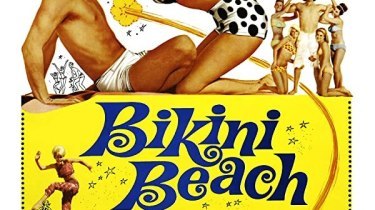
If you’re looking for some escapism, particularly since many of us didn’t have a summer vacation this year, how about a whole slate of 60s beach party movies?
You can read more about the history and why I like them at that link, but this month, Amazon has made the following available on Prime Video to watch for free if you’re a subscriber.
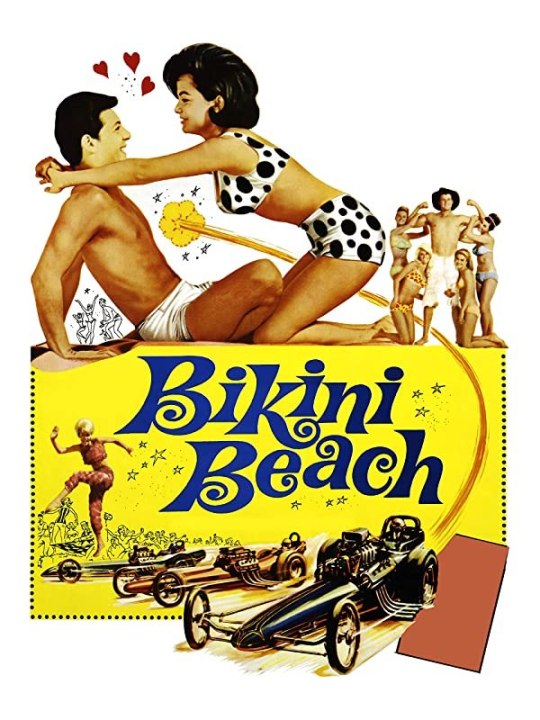
Weirdly, the first, Beach Party, and the best-titled, Beach Blanket Bingo, are not available. You can pay to rent the first but the latter isn’t available to US viewers right now.
If you’d also like a recommendation for a much more modern take on partner-finding and -swapping at the beach, I enjoyed watching A Good Old Fashioned Orgy, in which a group of thirty-something friends led by Jason Sudeikis decide to throw one last crazy party when he’s about to lose the family beach house. It’s also available to watch free on Prime Video right now.
Related Posts:
2 notes
·
View notes
Link
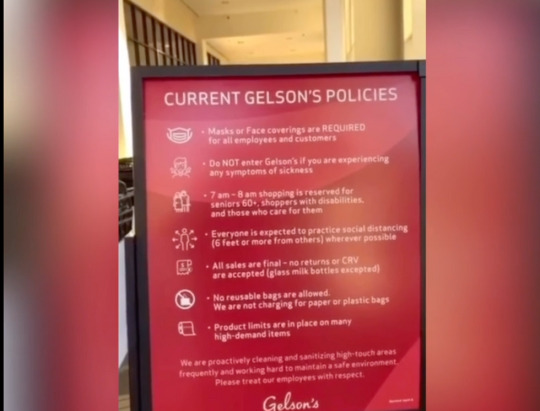
Earlier this month, we highlighted a meme making the rounds on the stupid part of the internet, featuring a card for people who don't want to wear masks to carry that says they don't have to wear a mask because they have a "medical condition" and that if anyone asks them what medical condition they have, that is a HIPAA violation and they can be sued.

This is, of course, not at all how anything works. But that doesn't mean no one's going to try it. And this weekend, someone did.
An Orange County, California, woman named Shelley Lewis posted a video to Facebook this weekend showing herself trying to enter a Gelson's supermarket in Dana Point without a mask. It did not work, but she said many extremely stupid things in the process, including the thing about how she has a medical condition that makes wearing a mask a risk for her and that it's a HIPAA violation if anyone asks about it.
The manager responded by telling her she could not come in, but that they would be happy to do her shopping for her. Lewis seemed to think this was merely a ploy to get her bank information and steal all of her money and possibly her entire identity, who knows. The clerk outside who had to deal with her shit responded by jauntily dancing to Michael Jackson's "Don't Stop Til You Get Enough" while cleaning a cart.
Lewis posted this to Facebook thinking she was gonna be getting an avalanche of support and "You go girls," and instead was widely mocked for her behavior by pretty much the entire internet for all of Sunday. She has since deleted the video and gone private on Facebook.
Her neighbors were not surprised.

Wonder if Shelley Lewis knows that she's gone viral 😂We should all go to Gelsons & support them for handling this with class & for protecting their staff 👏🏼👏🏼👏🏼
But it doesn't stop there! Apparently Shelley Lewis (who sometimes goes by the names Michelle Irwin Lewis or Shelly Lewis) is not only an anti-masker but she is also an anti-vaxxer and a flat-earther. In 2019 she spoke at a flat earth conference.
People in the Facebook comments accused her of lying about everything she claims about herself, but we are not invested enough to investigate. Her bio information does sound a lot like bullshit though.
Shelley Lewis is a passionate truther, a licensed holistic health practitioner, a certified lymphologist, a vegan chef, photographer, and co-director and co-producer of The Plane Truth Documentary. She holds a Bachelor of Science degree from the United States Military Academy at West Point, where she entertained hopes of becoming an AstroNOT.
Shelley served in the Army for 5 years where she jumped out of airplanes and became a paratrooper. She began her long quest for answers after being honorably discharged from the Military with a medical condition: Undifferentiated Connective Tissue Disease (Lupus). Through many years of studying and research, she found help through a vegan diet, lifestyle changes, and alternative medicine.She is co-Executive Producer and Co-Director of the grassroots documentary: The Plane Truth with JMTRUTH PRODUCTIONS. Look for it in 2020.
You cannot, in fact, look for this documentary because it seems she and her flat earth buddy had a very public breakup.
FLAT EARTH INFIGHTING 🤼 - JM Truth vs Shelly Lewis (Supposedly Shelly) www.youtube.com
Tragically, Michelle/Shelly/Shelley's YouTube videos have also been wiped from the internet. There is an hour-and-a-half-long interview with her about the earth being flat, but none of us should subject ourselves to that.
The earth is round, vaccines are good, masks are necessary for now, and crank magnetism is a real thing. But the real moral of this story is that you can't just believe everything you see in a meme, particularly if you are the sort of person who is going to go to the grocery store and make a giant fool of themselves and then post it to the internet thinking they're cool.
Also that dancing grocery store clerk deserves a medal of some kind.
[r/PublicFreakout]
Wonkette is independent and fully funded by readers like you. Click below to tip us! Also if you are buying stuff on Amazon, click this link!
0 notes
Link

Photo illustration by Slate. Images by Sullynyflhi/Wikimedia Commons Roi/iStock/Getty Images Plus.
Slate has relationships with various online retailers. If you buy something through our links, Slate may earn an affiliate commission. We update links when possible, but note that deals can expire and all prices are subject to change. All prices were up to date at the time of publication.
Forget all those pandemic novels people have been praising for their prescience in the age of COVID-19: For uncanny relevance, no fictional crisis rivals the showdown in N.K. Jemisin’s new urban fantasy The City We Became. A valentine to New York City, The City We Became depicts a metropolis under attack by a malevolent, infectious invader, aided and abetted by the stubborn fears and self-defeating prejudices of those who mistrust the city’s polyglot nature. No doubt when she was writing it Jemisin thought of the novel as a reflection of city life under the Trump regime, but damned if she didn’t anticipate how the seemingly maximized tensions of just a few months ago could be raised even higher and sharpened to a lethal point.
The City We Became is both an expansion of “The City Born Great”—one of the best stories in Jemisin’s 2018 collection, How Long ’til Black Future Month?—and a riposte to the 1925 H.P. Lovecraft story “The Horror at Red Hook,” a notorious explosion of racist disgust. It’s also a sophisticated exercise in contemporary allegory (and I’m not one to use that term lightly). What it isn’t, at least not consistently, is a crackerjack piece of storytelling. Jemisin’s premise is so savory and persuasive that it sometimes doesn’t matter that she hasn’t found a narrative style worthy of both. The city she sings fizzes so joyously through the veins of this novel that anyone mourning the New York before COVID-19 will likely find The City We Became equally sustaining and elegiac, a tribute to a city that may never fully return to us. Maybe that’s enough.
In “The City Born Great”—which, in adapted form, appears as a prologue to The City We Became—a cheeky black street kid learns that he has become the personification of New York. As an older man and sometime trick named Paulo explains it to him, at a moment of critical mass, a great city achieves a life of its own, a pocket formed in the fabric of reality:
N.K. Jemisin.
Laura Hanifin
And in that pocket the many parts of the city begin to multiply and differentiate. Its sewers extend into places where there is no need for water. Its slums grow teeth; its art centers, claws. Ordinary things within it, traffic and construction and stuff like that, start to have a rhythm like a heartbeat, if you record their sounds and play them back fast. The city… quickens.
A full throttle paean to New York, this prologue levitates on the velocity of its nameless narrator’s guttersnipe lyricism. “I’ll starve to death someday,” he announces, “or freeze some winter night, or catch something that rots me away until the hospitals have to take me, even without money or an address. But I’ll sing and paint and dance and fuck and cry the city before I’m done, because it’s mine. It’s fucking mine.”
Paulo—who turns out to be the personification of São Paulo, in town to help New York through this crucial transition—informs him that once the process is complete, he will be both himself and a powerful manifestation of the city, able to channel its spirit but susceptible to attacks on its integrity. Also, while his new allegorical identity is burgeoning, he’ll be vulnerable to a predator that wants to consume “the sweet new life” he represents and destroy the city’s soul. That’s what happened to New Orleans, with Hurricane Katrina, and Port-au-Prince, with the 2010 earthquake; both events only looked like natural disasters. In fact, they amounted to the triumph of a city-hating entity from another dimension, one that bears a strong resemblance to Lovecraft’s elder gods.
New York does battle with this entity, which takes the form of cops, naturally. He lures its emissaries into traffic on FDR Drive: “one lane silver car two lanes horns horns horns three lanes SEMI WHAT’S A FUCKING SEMI DOING ON THE FDR IT’S TOO TALL YOU STUPID UPSTATE HICK screaming four lanes GREEN TAXI screaming Smart Car hahaha cute five lanes moving truck six lanes and the blue Lexus actually brushes up against my clothes as it blares past screaming screaming screaming…” He bombards “the Enemy” in metaphysical combat with “a one-two punch of Long Island radiation and Gowanus toxic waste … and to stretch out its pain, I salt these wounds with the memory of a bus ride to LaGuardia and back.” The primary real-world casualty in this battle—which New York wins but barely—is the Williamsburg Bridge, which collapses under the weight of giant tentacle.
Urban fairy tales thrive on mystery and omission, the richness of their metaphors blossoming in what’s unsaid.
The rest of The City We Became recounts the similar awakenings of the avatars of the city’s five boroughs: Manhattan (a racially ambiguous newcomer with a shady past and a sharp wardrobe), Brooklyn (a black former hip-hop MC turned elegant city councilwoman), the Bronx (an aging Lenape lesbian who runs an arts center), Queens (a South Asian immigrant and math whiz), and Staten Island, depicted as an agoraphobic Irish American dominated by her bigoted NYPD dad. Each character gives Jemisin the opportunity to elaborate on the personality of that particular borough, with scrappy Bronca, descended from the indigenous inhabitants of the area—a battle-weary but still game veteran of countless underdog struggles—the standout. While it’s bemusing that not one of the five boroughs is represented by a Jew, for the most part this makes for a thrilling conceit, full of imaginative promise.
Unfortunately, the plot Jemisin uses to explore this world is fairly generic and overly in debt to cinematic precedents like superhero films. Each borough gets a bit of origin story and is called upon to join the team so that the assembled five can wake up the original avatar for the entire city, their leader, who like Sleeping Beauty is conked out in a hidden corner of the city, recovering from that epic battle on the FDR. Only together, under the leadership of New York’s primary personification, can they find the strength to battle the Big Bad that threatens to annihilate the city—or even worse, the entire universe, etc. Jemisin forges some fruitful links to contemporary politics: A significant challenge involves persuading Staten Island to be less fearful and suspicious of anyone who isn’t from Staten Island, and the Enemy enlists such useful idiots as guys who make YouTube videos about how oppressed white men are. But the anemic predictability of the storyline doesn’t do justice to the splendor of Jemisin’s setup.
The City We Became also shows some signs of genre confusion. Science fiction and epic fantasy typically have lots of explaining to do, laying out the working of unfamiliar lands and histories, convincing their readers with the sheer breadth of the author’s imagined world. In this novel, Jemisin has created a premise closer to an urban fairy tale, a form that thrives on mystery and omission; its wonders are simply there, the richness of its metaphors blossoming in what’s unsaid. This is a tricky narrative mode, one that requires the storyteller to have faith in her audience’s ability to find meaning in a story’s symbols even when she doesn’t spell that meaning out—in fact, because she doesn’t spell it out.
Fantasy has in common with poetry the ability to summon the numinous using only the humblest materials of the physical world. Jemisin certainly can do this: When Queens realizes that she has become the embodiment of her borough, she experiences “a sudden and intense rightness, shivering through the trees of her building’s backyard and thrumming up through the old frame house’s foundation. Dust puffs through cracks in the walls. She inhales the faint scent of mildew and rat droppings, and it’s disgusting, but it’s right.” Nevertheless, Jemisin too often lets herself get bogged down in unnecessary exposition and transitions; characters are constantly explaining that knowledge has simply popped into their heads, that they just had a feeling that they ought to do this or that, go here or there. It’s as if Jemisin were under orders to spell out their every motivation to a dim-witted movie studio executive. I found myself wishing that she’d trusted more in the spell she’s cast, in magic as a manifestation of our deepest wishes and fears, rather than a coherent, explicable system.
Still, the spell never entirely dissipates in The City We Became, partly because we seem to be living through an alternate ending for the novel—one in which the avatars of boroughs and the city failed to fight off their assailant and the soul of New York hangs in the balance. (It only looks like a natural disaster.) The hallmark of great fantasy is that it feels true even when you know it isn’t, and The City We Became does that, especially right now.
0 notes
Link
Even in an industry that has produced a seemingly endless number of eccentric characters among the ranks of its publishers, Charlton Comics stands out. The Connecticut company was started by two men who had met in jail, after all. Despite that unlikely origin story, the publisher managed to attract an impressive roster of talented staffers and creators throughout its history. Important creators ranging from Steve Ditko, Joe Gill, and Sam Glanzman to Mike Zeck, John Byrne, and Roger Stern made important contributions at Charlton.
Editors including Al Fago, Dick Giordano, and Nicola Cuti oversaw a wide range of memorable titles and characters over the years, including Blue Beetle, Captain Atom, E-Man, Ghost Manor, The Many Ghosts of Doctor Graves, Peter Cannon, Thunderbolt, and a long list of of others. Famously, when most of Charlton’s superhero characters were acquired by DC Comics in 1983, they ended up partially inspiring many of the characters in Alan Moore‘s and Dave Gibbons‘s Watchmen.
From the unlikeliest of beginnings, the legacy of Charlton Comics lives on in many ways, with characters like The Question and Captain Atom, the aftermath of Watchmen, and even the current Charlton Neo publishing line.
The original Charlton line contains countless lesser-known comics worth revisiting in the decades since they were published. Reviewing Craig Yoe‘s The Unknown Anti-War Comics recently, I was surprised by a number of memorable tales from the Charlton titles, particularly the Charlton Premiere story Children of Doom by Denny O’Neil and Pat Boyette, which Alan Moore has cited as among the comics that stand out to him from the era.
Browsing through the listings for tonight’s Comic Connect session and admiring that impressive run of high-grade Space Adventures issues they have up for auction, I noticed another Charlton comic that’s worth a closer look in the context of the present day: Space Adventures #7, cover-dated July 1953.
The blurb on the cover makes the theme of the feature story — written and drawn by Dick Giordano — fairly clear:
In this issue… “Transformation”, the Hard-Hitting Story of Scientists’ most Recent Revelation
This is a reference to the procedures which were sometimes called “Sex Transformations” during that era. In particular, the likely inspiration for this story is Christine Jorgensen, a former U.S. Army clerk who was the first American to have a sex change operation, and whose story hit the New York Times on December 2, 1952. Jorgensen’s experiences subsequently created significant mainstream news coverage of transgender issues in the U.S.
I’m certain that sifting through several news stories from that moment provides a far from complete picture of the tenor of the resulting national conversations, but reading through some of these early 1950s newspaper stories about Jorgensen and others on the subject is still downright startling from the perspective of the current day. The 1950s coverage all seems so very… calm, by comparison. Politics didn’t dominate the conversation of the issues during that era. People were curious, experts were found to provide basic explanations. In a few articles, some scientists noted that it would take quite some time for everyone to begin to understand these issues more fully, and that the related mental and physical health care would continue to improve.
As is reflected in Giordano’s Space Adventures story as well, it’s probably worth pointing out that the country and the world had very many other issues on our minds in those early Cold War moments. The Soviet Union was developing its atomic bomb program with haste, Mao had established Communist rule in China, and America’s national security braintrust determined that the surest way out of this situation was to use its domestic propaganda machinery to traumatize us into believing we might all die in nuclear fire unless we built bigger, better, and more weapons than anyone else did.
In the face of freaking out that the events depicted in the comic book World War III #1 that same year might become real at any moment, the notion that transgender healthcare was becoming a topic of national discussion probably didn’t seem like something worth getting mad about.
It’s hard not to wonder if this is why Space Adventures #7 hasn’t drawn much particular notice until recently. The backstory of Giordano’s tale is the impending doom of World War III, and a small group of scientists who decide they’d be better off getting away from Earth by taking a space ship to Mars. The transgender themes here form a subtle but complex undercurrent for most of the story. The main character, who is one of the scientists involved, is said to be in a relationship with his (female) assistant. Except that he’s so indifferent about her that he hadn’t intended to take her to Mars with him until she confronted him about it, having overheard the plan. During the rocket ride to Mars, she attempts to encourage his attention by noting that she’ll be the only woman on Mars. But he responds by thinking that this move is rather presumptuous of her.
Ultimately, the group’s rocket crash lands on Mars, and it initially appears that the main scientist is the only survivor. He thinks to himself how lonely it will be, and decides to fill the time alone by developing and undergoing sex conversion procedures for himself. The unspoken implication seems to be that he could only finally do this when he was the last person left in the world. When there was no one left to judge him for it.
That’s just my interpretation of the story, and there could certainly be others. You can read Space Adventures #7 here and decide for yourself, and see how it all turns out in the end too.
Meanwhile, I’m going to check out this list of Space Adventures issues at Comic Connect again and see what other subjects they might have taken on while trying to write their way towards happily ever after during the Cold War.
The post The Surprising Trans-Themed Story in Space Adventures #7 from 1953 appeared first on Bleeding Cool News And Rumors.
0 notes
Link
With the September days upon us, now’s as good a time as any to update ourselves on pre-season news before The CW‘s “Arrowverse” shows return.
With Arrow shuffling off the network’s programming coil after an abbreviated eighth season (making The Flash the “elder states-show” of the “Arrowverse” as it speeds into its sixth season), Ruby Rose-starrer Batwoman joining the family alongside Supergirl, and a looming “Crisis on Infinite Earths” crossover that could change things dramatically (more on that below), the 2019-2020 season isn’t exactly going to be lacking in change – and the news hasn’t slowed down.
Arrow — “Starling City” — Image Number: AR801b_0067b.jpg — Pictured (L-R): Stephen Amell as Oliver Queen/Green Arrow, Katie Cassidy as Laurel Lance/Black Siren and David Ramsey as John Diggle/Spartan — Photo: Jack Rowand/The CW — © 2019 The CW Network, LLC. All Rights Reserved.
Arrow co-star Stephen Amell (Oliver Queen) and David Ramsey (John Diggle) are keeping the promotional machine for the show’s final season rolling along, as Oliver prepares to say goodbye in more ways than one – as a “Crisis” looms. Here are some highlights:
● While Oliver may be taking on this mission knowing full well it’s a one-way trip, he won’t be alone: as you can see from the image above, Diggle will be there – from start to foreboding finish (“Diggle is as he should be, at Oliver’s side. That’s how we begin this season. And ultimately, that’s how we end it.” – Ramsey)
● Fans know Oliver and Diggle need someone to keep them out of trouble and save their butts from time to time – and that’s where Katie Cassidy Rodgers‘ Laurel Lance aka Black Siren comes in. Amell believe fans will be surprised and appreciate the trio’s new dynamic this season: “Their dynamic is incredible. A good chunk of what we’re doing will be with the three of them in a way that they haven’t been before.”
● So how well have things been working out for the trio so far? Amell sounds pretty happy:
“I’ve loved our scenes in the first two episodes. I thought it was important at the end of season 7, us shaking hands and Oliver saying thank you. It was scripted to the group, but I wanted to make sure, going into season 8, that it was actually to her and that they shook hands, because as character I purposefully never called her Laurel until that moment. So her being the mix this year, it’s been a lot of fun. I think she’s nailing it.”
● Following up on Arrowverse guru Marc Guggenheim promise that this season would be a “greatest hits” of the previous season, Amell offered some more details: “Episode 1 is like season 1, episode 2 is about a very specific part of season 3. Episode 3 is about a very specific part of the latter half of season 3. Every episode feels like an event. It feels like a limited series.”
Arrow — “Starling City” — Image Number: AR801b_0176b.jpg — Pictured: Stephen Amell as Oliver Queen/Green Arrow — Photo: Jack Rowand/The CW — © 2019 The CW Network, LLC. All Rights Reserved.
The Road to “Crisis on Infinite Earths”
Viewers can’t say they weren’t warned in advance. At the end of 2018’s CW Arrowverse “Elseworlds” crossover that brought together The Flash, Arrow, and Supergirl (and nearly DC’s Legends of Tomorrow, but they let it go to machine – way too busy for all that), we saw that the end was only the beginning… of the end. As Barry (Grant Gustin) and Oliver (Amell) shared what felt like a final toast and Kate Kane’s Batwoman (Rose) returned to protecting the streets of Gotham – with a sense that something felt a little off – we got a small taste of what’s still to come in 2019…
“Crisis on Infinite Earths!” Worlds will live! Worlds will die!
And the CW’s “Arrowverse” will never be the same…
The season’s eighth episode will be the “Crisis” crossover episode – comprising the fourth hour of the crossover:
Supergirl – Sunday, December 8th (8/7c)
Batwoman – Monday, December 9th (8/7c)
The Flash – Tuesday, December 10th (8/7c)
Arrow – Tuesday, January 14, 2020 (8/7c)
DC’s Legends of Tomorrow – Tuesday, January 14, 2020 (9/8c)
Black Lightning will also be represented during the crossover event… and yes, legendary Batman voice actor Kevin Conroy will star as a future version of Bruce Wayne. If that wasn’t enough, Tyler Hoechlin will be returning as “The Man of Steel”… alongside the crossover’s other Superman (expecting this number to grow): Brandon Routh (DC’s Legends of Tomorrow), returning to the cape for the first time since his cinematic turn. Johnathon Schaech’s Jonah Hex (DC’s Legends of Tomorrow) is also set to saddle up for the crossover, and John Wesley Shipp will be reprising his role as The Flash of Earth-90.
For most of their respective seasons, things have been “All Quiet on the ‘Crisis’ Front” when it came to Arrow, The Flash, and Supergirl – but that changed in a big way during their respective season finales… even for DC’s Legends of Tomorrow!
CW
In Arrow season finale “You Have Saved This City,” the Monitor (LaMonica Garrett) returns to cash in on the favor that Oliver owes him: help him save the multiverse – taking a moment to tell him the “fine print”: Oliver’s going to die during “Crisis” and there’s nothing the Monitor can do to stop it.
Then there’s that matter of Future Felicity (Emily Bett Rickards) and the trip she’s taking with the Monitor to see Oliver… somewhere… and it’s apparently a place she can’t come back from. Hmmm…
Over at The Flash season finale “Legacy,” some recent maneuverings with Time moved up the date on Barry’s “red skies/2024” newspaper warning just a wee bit… to say, 2019?
The fourth season finale of Supergirl “The Quest for Peace” had The Monitor speaking to a hooded figure, telling him that now is the time for him to lead “his people” and to take revenge on his captor… and brother: J’onn J’onzz (David Harewood). Meanwhile, just because Lex Luthor (Jon Cryer) may have shuffled off this mortal coil (???) doesn’t mean his role in the upcoming “Crisis” is over quite yet…
DC’s Legends of Tomorrow season finale “Hey, World!” found the plan to take down Neron (Brandon Routh) resulting in a major status quo change for Zari (Tala Ashe) – a change that the suddenly-appearing Monitor does not appear to approve of in any way, shape, or form. At least he got some popcorn out of it – and yes, that is The Book of Destiny he’s using to balance it.
The CW’s Batwoman and Supergirl premiere Sunday, October 6; while The Flash premieres Tuesday, October 8, with Arrow joining them on October 15. Black Lightning premieres the following week, on Monday, October 21.
Entertainment Weekly
The post “Arrow” Season 8: Stephen Amell on Oliver Not Approaching “Crisis” Alone [PREVIEW] appeared first on Bleeding Cool News And Rumors.
0 notes
Link
‘Game Of Thrones’ Star Kit Harington To Join The Marvel Cinematic Universe https://t.co/uh5sCi5tHd pic.twitter.com/1bVTKhTotZ
— Deadline Hollywood (@DEADLINE) August 23, 2019
Source
It doesn't say which film he'll be in, or what his role will be though. Your best guess, ONTD on what movie he'll be in?
0 notes
Link

Photo: Ron Galella, Ltd./WireImage
The first time Britney Jean Spears ever left America was to go to Stockholm in 1998. It was spring, and in less than a year, the fruits of ten days of labor there would be out in the universe. With it, the hardest-working, most successful teenage superstar of the 1990s would have a debut album. Prior to that, she was just a 15-year-old Mouseketeer — a former classmate of future ex-boyfriend Justin Timberlake, future ex-rival Christina Aguilera, and Ryan Gosling. On her first international voyage away from her small hometown Kentwood, Louisiana, she met a bunch of bearded Swedish producer-songwriter dudes (no disrespect to the now-monolithic Max Martin, and the sadly departed Denniz Pop), and together they made pop history and miscellany.
Perhaps that context is why …Baby One More Time (named, of course, after the Goliath breakthrough single) is the listen it is 20 years later. It wasn’t the reactive album conception we’re accustomed to now. It came before album rollouts were meticulously mood-boarded in the wake of one viral online hit, and plotted with the use of some neurotic, algorithm-assisted A&R development program. Spears’s debut was a bunch of songs she’d recorded before her opening statement changed the course of popular music.
That single — and title track — moved the earth with its first bars. Those first few seconds still sound like an intergalactic alarm clock rousing us from a faraway planet inhabited by horny robots. “DUR! DUR! DUR!” they warned. The Millennium Bug was coming to wipe us out and MTV was the most likely host for the final dance party. The single remains one of the signature pop songs of its ilk, borrowing from the school of Backstreet Boys and ’N Sync but with a new melodramatic, turgid molasses of beats and piano stabs that sounded as heavy as the distress their lovesick narrator suffered.
There is no second “… Baby One More Time” on the record. Her third single “(You Drive Me) Crazy (The Stop Remix)” was the closest contender, but still planets away from that entrance point. To listen to Spears’s debut front-to-back is to travel back to a distant past where the wool was willingly pulled over audience’s eyes and fans were satisfied with being hit over the head by a song without needing to know the who, where, and what from whence it came. This was before we gained a bird’s-eye real-time view of the warts-and-all process of cherry-picking backwoods talent on X Factor. It was before that accessibility worked the other way, and the likes of Lorde could launch a career online from the end of the Earth. Nobody in a pre-social-media era demanded logical intent from their overnight superstars. The aim was to use the vessel that was Spears and build a catalogue of danceable teen bops for her to perform in the malls where she made her first touring appearances. The LP’s clean fun also established a foundation from which she’s since built a career far longer than this album ever anticipated. The foundation is listenable and enjoyable, yet questionable, flawed, bizarre, and epically over the top.
Spears had a voice that was bigger than her life story so far. It was not the voice of an innocent small-town girl. “…Baby One More Time” could be sung by a 15-year-old or a 40-year-old. Spears’s voice was perhaps a problem. The Britney-isms were fine, great even: bay-buh versus bay-bee, and an inflection so nasal that one of her backing vocalists once told the press she pinched her nose while recording her takes for the album to match Spears’s. Those affectations lend her a sort of pop-star weirdness, but it’s the rich depth of her voice that creates an issue: It’s too serious for frivolities, like a ball gown she can’t fit into yet but has to wear anyway. In attempt to match it, her collaborators tried both adult contemporary and tween jingles on her in the hopes something would stick.
Take the reggae-inspired “Soda Pop,” a song riffing on the addictive nature of soda (“open the soda pop, bop-shee-bop-shee-bop”). You may ask again: What planet did this come from? The charming bamboozlement of “Soda Pop” notwithstanding, silliness is not Spears’s legacy. Pain, solitude, gut-wrenching rejection — this is where she lives. Not to shade her performance on “Soda Pop.” There is not another singer in the world who could run lines around the lyric “the pop keep flowin’ like it’s fire and ice,” and ready it for a highly anticipated debut album release. Artists like Billie Eilish are decidedly not recording a “Soda Pop” at the moment.
More confusing than “Soda Pop,” however, is her presentation. The consistent message of Spears’s story arc has been the innocent-until-proven-otherwise mantra. Her album’s material conflicted with her physical presentation. What she did with her body and what she said via her mouth were worlds apart. For example, contrast the album-cover art with her first Rolling Stone cover. The latter was shot by David LaChapelle, and featured Spears on her bed in lingerie, a Tinky Winky doll brushing her nipple. Oh to be a fly-on-the-wall during the decision-making process about which Teletubby was going to work best. Even after two albums, Spears remained on the fence with her third record, Britney, concluding at the age of 20 that she was “not a girl, not yet a woman.” But the seeds of the oversexed virgin enigma were born on …Baby One More Time with its advanced lyrical appeal to the perils of thwarted romance.
The schmaltzy “I Will Still Love You,” a homogenous duet with Don Philip about undying love so burdensome the tryst sounds like life imprisonment. Then there’s single “Born to Make You Happy,” which is emo-level tortured. “I don’t know how to live without your love,” she sings on the piano-driven hit. She was 16, channeling emotions that are on par with Shakespeare’s Romeo and Juliet (incidentally, nobody was pretending those guys were just holding hands). She plays the doting, subservient girlfriend, always on the other end of the phone, neither a threat to the school jock nor to his mom and dad. And yet she burns with the desire of a thousand Jackie Collins novels.
It made sense that this was Spears’s oeuvre. She would reveal on TV appearances that she was a student of Mariah Carey and Whitney Houston. She was eager to be considered a singer-songwriter. Before the train pulled out from the station, she was looking to position herself as a younger Sheryl Crow. After sexing up the Catholic-school-girl look, she was a lifetime away from Crow, but the songs were rooted in a similar world of romantic balladry; one in which love is as intoxicating as it is near fatal. There are hints at her own inspirations too. Natalie Imbruglia in “I Will Be There” — a guitar-based number, which has a post-chorus wailing guitar line that borrows heavily from “Torn.” Cher is referenced with a great cover of Sonny & Cher’s “The Beat Goes On,” which came before Cher resurrected her career with “Believe” and auto-tune.
The album is also a time capsule for the desperate, but still lucrative, state of MTV in the late ’90s, appeasing the erratic genre-bending of the network’s jukebox before it imploded. It features a ton of, at the time, commonplace production bells and whistles: the sci-fi whirring effects transitioning into verses (“Sometimes”), the copious cowbell (“(You Drive Me) Crazy”), the sprinkles-of-stardust keys (“Deep in My Heart”), the bouncing synths (title track). Stepping into the future was the song, “Email My Heart” — which Rolling Stone called “pure spam.” In an interview from 1999, Spears discusses its inception: “Everyone’s been doing emails, and it’s [called] ‘Email My Heart’, so… everyone can relate to that song!” Turns out Spears would have the last laugh considering the intimacy of our online discourse two decades later.
The critic Jon Caramanica wrote in the New York Times that Spears’s blueprint of pop is but one subsection of the genre now, which makes sense when you listen back. We live in an age where pop is supposedly controlled by us, not them. This album does not sound like supply meeting demand. Nobody would have streamed most of …Baby One More Time if it came out now. It’s a mess. And yet it’s her biggest seller to date. Producing five hit singles, it made her the Antichrist among critics and purveyors of “real” music. In its review of the album, NME wrote: “Hopefully, if she starts to live the wretched life that we all eventually do, her voice will show the scars, she’ll stop looking so fucking smug, she’ll find solace in drugs and we’ll be all the more happier for it.” It was a different time.
0 notes
Link
Image: Leaving the opera in the year 2000, lithograph by Albert Robida (late 19th century)

FirstsThis week we're taking a look at first things, early things, and—for better or worse—things that are #1.
Science fiction writers are professional future-dreamers, imagining worlds far beyond their own. With technology advancing at astronomical rates, real life feels more and more like sci-fi every day (for better or worse). So it’s fun to look back at those writers who, decades and even centuries ago, imagined what life would be like now—and some of their predictions were surprisingly accurate.
It’s difficult to pin down exactly who was the first to predict the internet, because the further back we go the more abstract these predictions become. However, these three authors are the best contenders for the title—within the very limited confines of Western European fiction—and you can decide which one of them was truly the first to predict the internet as it works today.
Edward Mitchell — The Senator’s Daughter (1879)
Edward Page Mitchell is far from a household name. Yet he was a foundational figure for modern sci-fi, dreaming up faster-than-light travel, cyborgs, teleportation, mutants, and time travel long before HG Wells and other more well-known writers developed these ideas. Despite being born in 1852, Mitchell’s short stories were amazingly prescient, and The Senator’s Daughter features a fascinating machine that parallels social media newsfeeds.
Written in 1879 but set in 1937, The Senator’s Daughter imagines the future of world politics, as a poignant, star-crossed romance plays out. Our young lovers are divided by politics and race, and Mitchell’s social commentary makes this story well worth a read. Although the focus is largely socio-political, Mitchell uses fantastic technology to place the events in the future—and that’s where we find our internet prediction. Here’s an excerpt:
[Mr. Wanlee] went to one side of the room, where an endless strip of printed paper, about three feet wide, was slowly issuing from between noiseless rollers and falling in neat folds into a willow basket placed on the floor to receive it. Mr. Wanlee bent his head over the broad strip of paper and began to read attentively.
“You take the Contemporaneous News, I suppose,” said the other.
“No, I prefer the Interminable Intelligencer,” replied Mr. Wanlee.
This unnamed contraption provides a constant stream of news from multiple different publications, reporting on live events around the world. It may seem small, but it’s quite amazing that Mitchell dreamed this machine up, considering that electronic printers were far from being invented. The immediacy of the reports, the breadth of publications, and the fact that this is all available in Mr Wanlee’s own home is reminiscent of social media newsfeeds, RSS feeds, and even Google News.
As Mitchell was primarily a journalist, it’s fitting that he predicted news culture in the internet age. However, although this story was chronologically published before the others on this list, Mitchell’s news machine is maybe a little too specific to be considered an all-encompassing prediction of the internet. But he wasn’t the only one to imagine live reports from around the world…
Mark Twain — From The London Times in 1904 (1898)
Mark Twain might be known for his sardonic depictions of quaint American life, but he occasionally branched out into other genres with his short stories. The 1898 story From The London Times In 1904 introduces a machine called the Telectroscope, described as a “limitless-distance” telephone that allows the user to view events all around the world in real-time, as well as interact with the people there. This provides comfort to one Mr Clayton, a man awaiting his execution after being accused of murder.
…day by day, and night by night, he called up one corner of the globe after another, and looked upon its life, and studied its strange sights, and spoke with its people, and realized that by grace of this marvelous instrument he was almost as free as the birds of the air, although a prisoner under locks and bars.
In Twain’s story, the Telectroscope reveals that the man Clayton supposedly killed is still alive. Clayton is released, but the courts rule that his execution must still be carried out. Despite the evidence, Clayton is executed at the end of the story. In our current culture of defiance in the face of apparently indisputable evidence (say, of a crowd gathering to see a president elected), Twain’s scathing tale of obstinate blindness to the truth certainly resonates.
Unsurprisingly, Twain is frequently credited with being the first to predict smartphones and social media, as the Telectroscope is similar to the livestreams and video chats we use today. However, there is another author who arguably got much closer to a comprehensive view of how the internet works…
E.M. Forster — The Machine Stops (1909)
Between two of his most famous works, A Room With A View and Howard’s End, E.M. Forster took a break from writing about class hypocrisy to pen a futurist novella that doesn’t just predict many of the functions of the internet, but also its effect on society. The Machine Stops is set in a post-apocalyptic future wherein humanity has retreated underground to live in pods. Their society is managed, maintained, and controlled by the Machine, an automatic entity that is revered by all. The Machine provides every material comfort for the population, as well as allowing them to access a vast archive of information, and communicate with each other visually and aurally.
Then she generated the light, and the sight of her room, flooded with radiance and studded with electric buttons, revived her. There were buttons and switches everywhere – buttons to call for food for music, for clothing. [...] There was the button that produced literature. and there were of course the buttons by which she communicated with her friends. The room, though it contained nothing, was in touch with all that she cared for in the world.
Although radio and telephones were becoming more widespread when Forster was writing, such a vast, automatic network was unheard of in 1909. The Machine parallels the internet in dozens of ways, from co-ordinating the practicalities of this society (much like how traffic lights are run automatically today), to archives of information and film, to instant communication.
This apparently comfortable society is not without its problems, however. People are wary of touching one another, and dare not question the Machine. In fact, we could even argue that Forster predicted the social media bubble, wherein people regurgitate ideas to those in their little internet community — at one point in The Machine Stops, a university professor warns people to “beware of new ideas!”
Although The Machine Stops was predated by Twain and Mitchell’s stories, Forster’s predictions are far more all-encompassing, with the Machine paralleling the internet beyond mere elements of social media. There will always be debate over who predicted the internet first, but Forster’s foresight is eerily similar to modern day. Ultimately, the Machine breaks down and with it, so does this civilization. We’ll just have to hope that this particular prediction doesn’t come true.
0 notes
Link
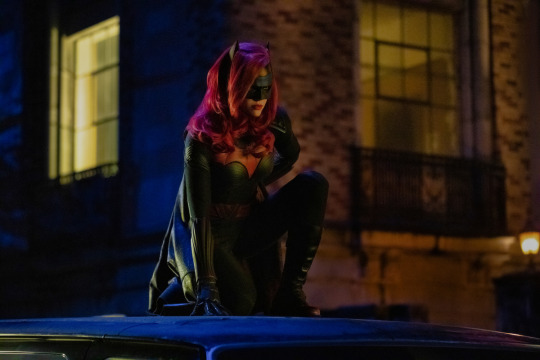
For those who enjoyed the scenes we got of Batwoman in the three-episode “Elseworlds” crossover, you can rejoice: according to TV Line, the CW has indeed ordered a Batwoman pilot.
Arrow/Flash director David Nutter will be handling the pilot, and Caroline Dries (The Vampire Diaries) wrote the pilot episode. Dries will serve as an executive producer alongside Greg Berlanti, Sarah Schechter, and Geoff Johns.
“Slated for a potential Fall 2019 premiere, Batwoman would follow Kate Kane — the second incarnation of the Batwoman character in DC Comics lore, introduced in 2006 — who is described as ‘an out lesbian and highly trained street fighter’ who is ‘primed to snuff out the failing city’s criminal resurgence.'”
Ignoring my own mixed feelings about Ruby Rose, there’s still a major part of me that is excited that Batwoman/Kate Kane will be joining the live action universe. The character is well-loved and it’ll be fun to see another member of the Batfamily besides Dick Grayson and Bruce Wayne brought into the fold. Not to mention that it’s great to see a lesbian woman being able to play a lesbian character. My hope is that they will bring in other female writers who are lesbians and queer, along with Jewish writers, to make sure that part of Kane’s identity isn’t ignored.
When Caroline Dries was asked about why they decided to reveal Kane’s identity instead of holding it out for the pilot, she said that “[i]t was important for us to humanize Kate in a way that made her relatable to the other characters in the Arrowverse, even though we were creating an enigmatic character.”
Personally, I think it would seem weird if they had kept it a secret, considering we already know who the actress and character are. If anything, they should have given us a bit more of Kane, just so that we could get a better feel for the character, especially since we know it was leading up to this potential pilot.
Casting is in the works to bring on Kate’s father Colonel Kane, Batwoman’s archenemy Alice, and a character that some say sounds like a Renee Montoya-type. Considering Montoya is going to be appearing in the Birds of Prey series, I’d be a little surprised if they used her here. On Arrow, they got rid of a lot of characters on the show who ended up in the Suicide Squad movie (mistakes all around), so if we see the real Renee Montoya that’ll be an interesting shape up.
I’ll try to stay optimistic. With the exception of Arrow, I do enjoy all of the Arrowverse shows to a degree, and I think that they have the potential to do something really special with Kate Kane and the property. The world needs more crime-fighting lesbians.
What did you guys think of Ruby Rose as Batwoman in “Elseworlds”: are you interested in seeing another comic book property enter the Arrowverse?
(via TV Line, image: Jack Rowand/The CW)
Want more stories like this? Become a subscriber and support the site!
—The Mary Sue has a strict comment policy that forbids, but is not limited to, personal insults toward anyone, hate speech, and trolling.—
0 notes
Link
You may have listened to With Great Pleasure, Neil Gaiman on BBC Radio 4 before Christmas Day. But now that the day itself has passed, there’s no reason you shouldn’t listen to a dramatic adaptation of his book Neil Gaiman’s Norse Mythology.
Produced by the BBC, and starring Diana Rigg, Derek Jacobi, Colin Morgan, Natalie Dormer and Neil Gaiman himself, it is available here on the BBC iPlayer free, worldwide, for the following four weeks.
Ad to the promote the show, why not play the BBC’s online game Which Norse God Are You?
Damn, Loki again…
—-
‘And the game begins anew…’
As the nights draw in and frost begins to crackle in the air, Neil Gaiman’s Norse Mythology comes to Radio 4, inviting us into a world of gods and monsters, fiery endings and new beginnings, tricks and trust.
Diana Rigg, Derek Jacobi, Colin Morgan and Natalie Dormer lead a stellar cast, inviting us into these stories of old betrayals – and new hope.
We meet the trickster god Loki and his astonishing children – the giant wolf Fenrir, Jormungundr the snake that encircles the world, and Hel, the little girl who grows up to be Queen of the dead. We meet Odin the all-father, who sacrificed his eye to see the future, and Freya the understandably angry, most beautiful of the gods and always being gambled for by unwanted suitors. And the stories take us to the very end of the world, Ragnarok.
The stellar cast also includes Luke Newberry, Nonso Anozie, Rhashan Stone, Don Gilet, Nathaniel Martello-White, Tayla Kovacevic-Ebong, Lucy Doyle, Michael Bertenshaw, Lewis Bray, Alexandra Constantinidi, Cameron Percival, Saffron Coomber…. And Neil Gaiman himself.
Author …… Neil Gaiman
Adaptor …… Lucy Catherine
Sound Design …… Wilfredo Acosta
Director & Producer …… Allegra McIlroy
Cast:
Teller ….. Diana Rigg
Odin ….. Derek Jacobi
Freya ….. Natalie Dormer
Loki ….. Colin Morgan
Thor ….. Nathaniel Martello-White
Balder ….. Luke Newberry
Thrym ….. Nonso Anozie
Fenrir ….. Rhashan Stone
Heimdall …..Tayla Kovacevic -Ebong
Mimir ….. Don Gilet
Sif ….. Lucy Doyle
The Stranger ….. Lewis Bray
Brokk ….. Michael Bertenshaw
Hel ….. Alexandra Constantinidi
Eitri ….. Cameron Percival
Angrboda ….. Saffron Coomber
Magnus ….. Eviee Lavery
Young Hel ….. Grace Doherty
Radio ….. Neil Gaiman
The post Diana Rigg and Derek Jacobi Star in BBC Adaptation of Neil Gaiman’s Norse Mythology, Streaming Free, Worldwide, Now appeared first on Bleeding Cool News And Rumors.
0 notes
Link
Netflix’s new Black Mirror movie, Bandersnatch, is an interactive story that lets you decide what happens. The protagonist, Stefan, is trying to create his own interactive video game — also called Bandersnatch — and as you navigate through the plot, your decisions shape how he responds to family trauma, his own ... More »
0 notes
Link
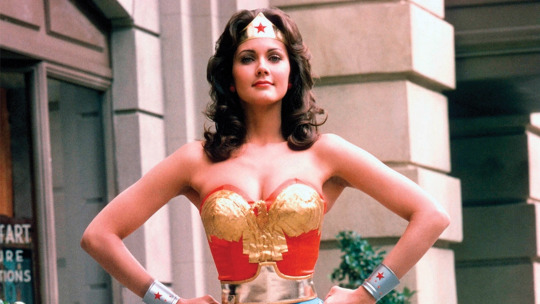
Lynda Carter as Wonder Woman.
Image: CBS
Norman Gimbel, an Oscar- and Grammy-award-winning lyricist and songwriter, has passed away, Comic Book Resources reports. He was known, among other things, for the Wonder Woman theme song from the popular 1970s series starring Lynda Carter.
Theme songs are an important part of the superheroic legacy, and did a very strong job of helping to cement some of our most popular heroes in the pop cultural imagination. So the influence of writers like Gimbel, who crafted lyrics to those songs, can’t be understated. Born in Brooklyn in 1927, Gimbel worked in the recording industry for decades, writing the lyrics to a number of TV theme songs, such as Happy Days, and winning a Grammy for writing “Killing Me Softly With His Song” with Roberta Flack.
Gimbel’s work has a huge influence on pop culture, and on superherodom. Here’s his Wonder Woman theme to remember him by:
For more, make sure you’re following us on our new Instagram @io9dotcom.
0 notes
Link
My pal Bryan Boyer has built a device he calls a VSMP (Very Slow Movie Player). It’s an e-paper display that shows a movie not at 24 frames/sec but at 24 frames per hour.
Films are vain creatures that typically demand a dark room, full attention, and eager eyeballs ready to accept light beamed from the screen or projector to your visual cortex. VSMP inverts all of that. It is impossible to “watch” in a traditional way because it’s too slow. In a staring contest with VSMP you will always lose. It can be noticed, glanced-at, or even inspected, but not watched. That’s one of the things I like about the Bill Viola pieces. You don’t watch them because they’re not films; they’re portraits so you see them, and it just so happens that you see them in four dimensions.
Ahhh, look at this gloriously retro aesthetic:
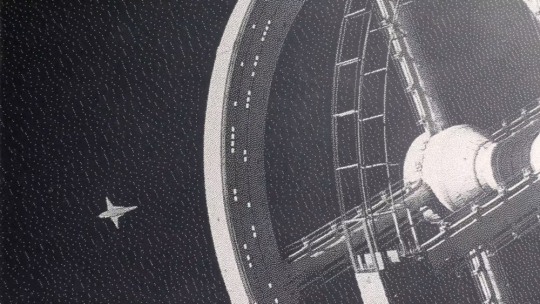
His whole essay about the project is worth reading for the thoughtful insights throughout. I totally want a wall-sized VSMP in my bedroom.
More about...
0 notes
Link

Who this is for: People who want a permanently installed way to screen visitors at the door, whether they’re on the other side of the door or the other side of the world.
Why we like it: The Ring Video Doorbell 2 is part butler and part guard dog, with enough setup options to make it the most versatile doorbell camera we’ve tested. The new Ring Video Doorbell captures 1080p video in a 160-degree field of view and notifies you via smartphone, and audibly in your home, whenever someone comes to the door; you can even answer visitors remotely through the app with the camera’s built-in two-way audio. The motion-detection sensors are highly sensitive, but you can adjust how much they pick up and when they notify you. And if you can’t answer right away, cloud storage is available for $3 or less per month through the Ring Protect Plan, so you can watch the footage later on your smartphone or computer. Starting in 2019, this subscription will also unlock additional Smart Alert features such as Person Detection, which improves the motion-detection sensors, as well as audible announcements that inform guests when they’re being monitored.
The Ring Video Doorbell 2 is easy to set up with your existing doorbell wiring or with an included rechargeable battery. It’s even compatible with existing wired mechanical and digital chimes, and it works with most popular smart-home devices and platforms, too.
Photo: Michael Hession
Flaws but not dealbreakers: The Ring is noticeably bulkier than other doorbell cameras we tested, so it may be difficult to mount on some door frames. However, you can mount it on the side of your door if necessary, and you can still get full coverage with help from the wide-angle lens and the included wedge base.
The Ring’s hyper-sensitive motion-detection settings can be difficult to finesse the first time around, so you may need to take a while to figure out the best balance between avoiding nuisance alerts when a bug flies by and capturing video that doesn’t start until after the person has turned to walk away.
Subscription: $3 per month or $30 per year through Ring Protect
Power: hardwired or rechargeable battery (included)
Works with: Alexa, Google Assistant, IFTTT, Kwikset Kevo, Wemo, Wink, Nest, and home security systems such as ADT, Lockstate, and Smartlink
Learn more in our full review of the best smart doorbell camera.
0 notes
Link

Thumb Score: +446
Roku.com has select Roku Themes (various themes) for Free when you login to your Roku account. Thanks crazeedave
Note, these themes will be transferred to your eligible Roku device.
Some Examples[LIST][*]BBC America: Doctor Who Theme
0 notes